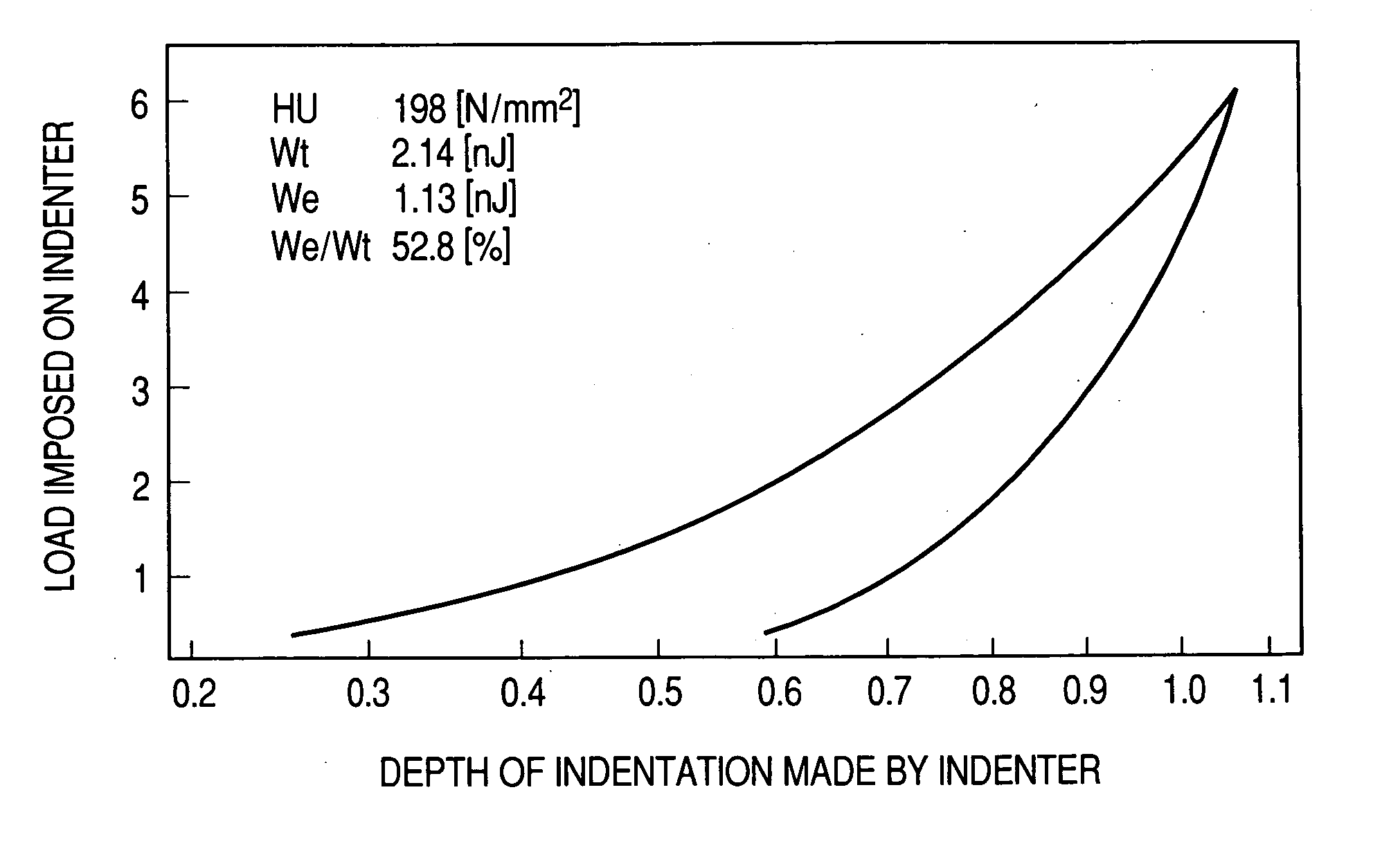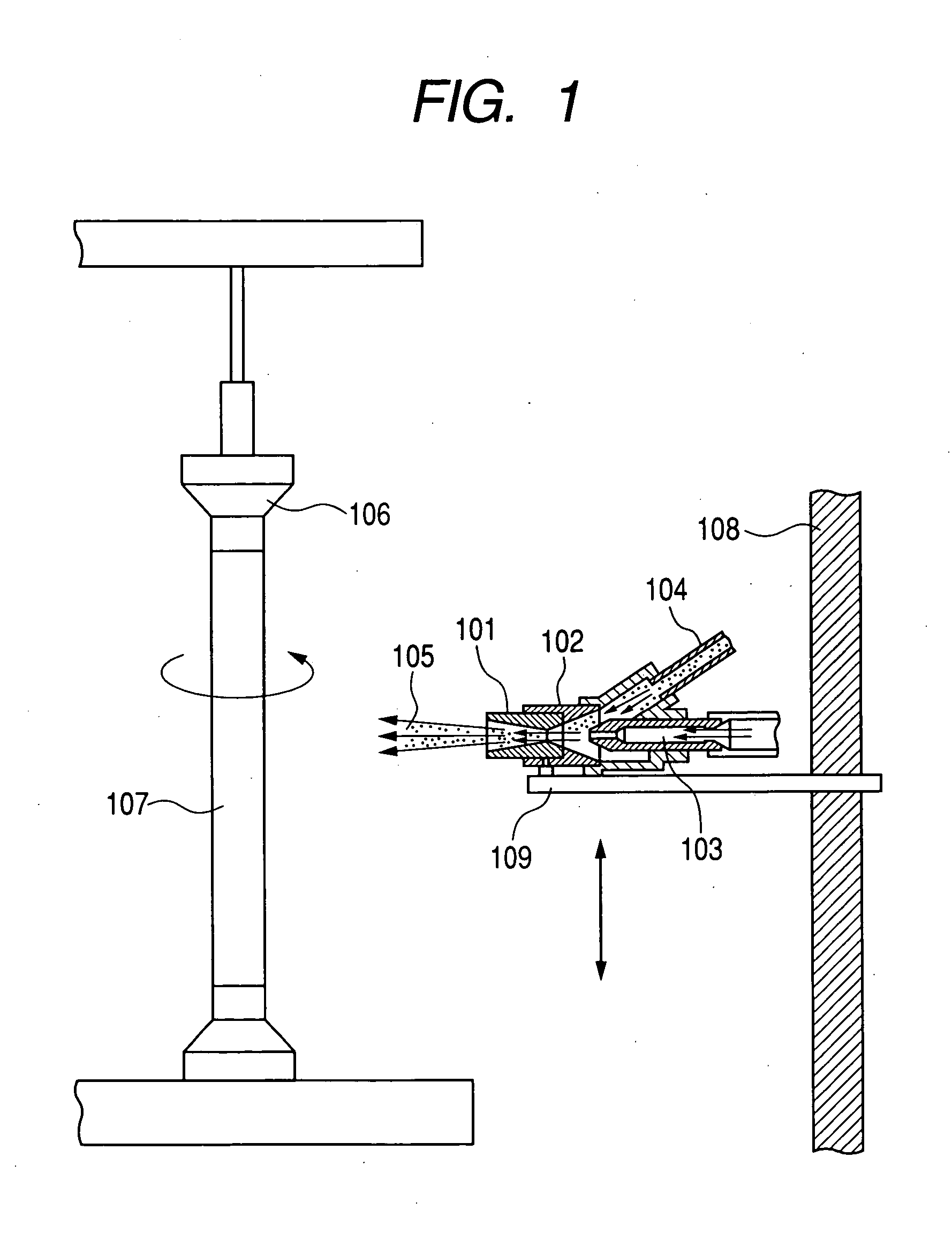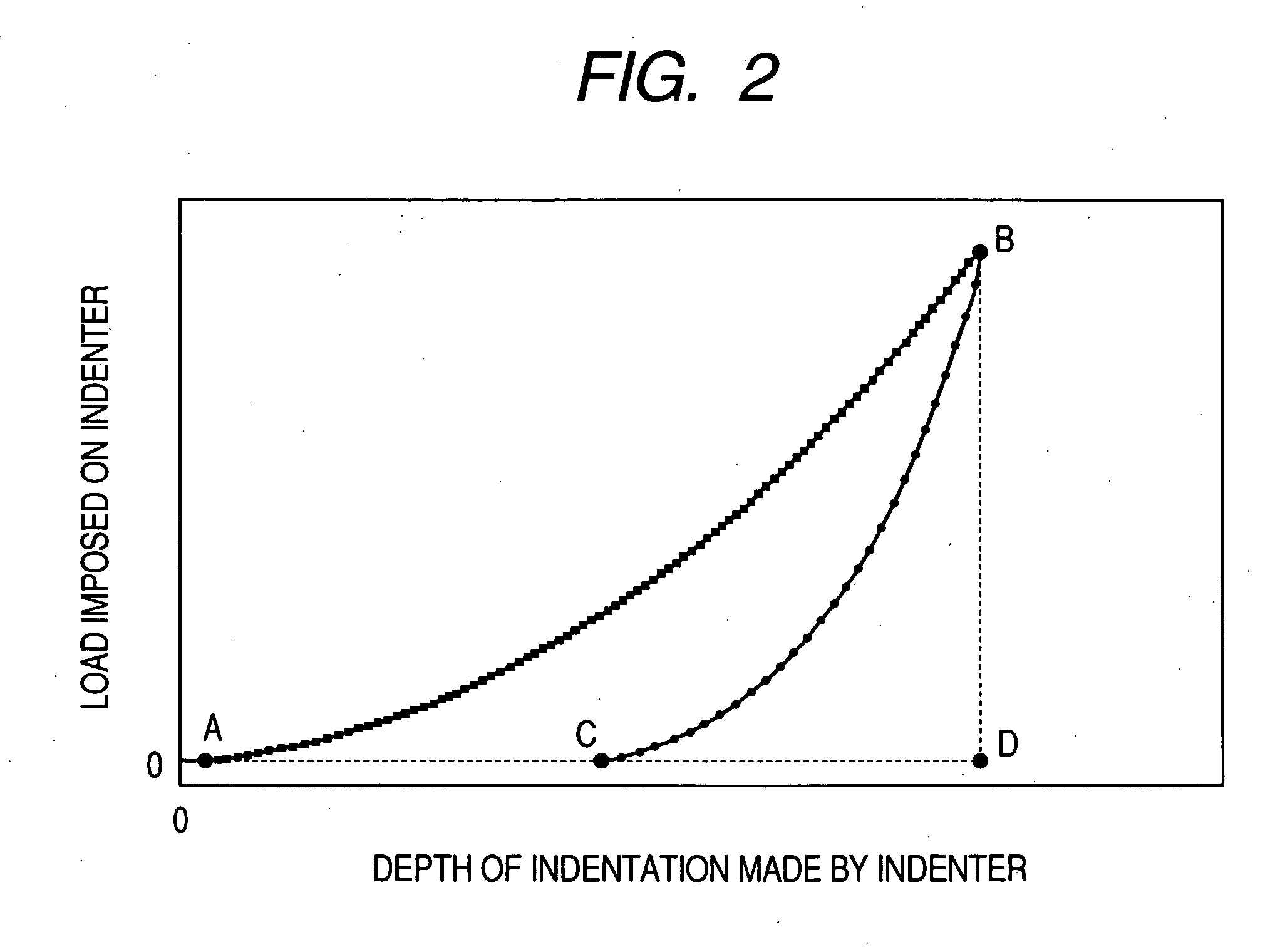Electrophotographic photosensitive member, method for manufacturing electrophotographic photosensitive member, process cartridge and electrophotographic apparatus
a technology of electrophotography and photosensitive parts, which is applied in the direction of electrographic process equipment, optics, instruments, etc., can solve the problems of increasing problems, increasing the cost of cleaning blades, and chatting and wear of cleaning blades
- Summary
- Abstract
- Description
- Claims
- Application Information
AI Technical Summary
Benefits of technology
Problems solved by technology
Method used
Image
Examples
example 1
[0158] The electrophotographic photosensitive member to be used in Example 1 was prepared in the following manner.
[0159] First, a JIS A3003 aluminum alloy was machined into an aluminum cylinder having a length of 370 mm, external diameter of 84 mm and wall thickness of 3 mm.
[0160] The 10-point average roughness Rzjis as measured by sweeping along the generating line of the surface (peripheral surface) of the prepared aluminum cylinder was 0.08 μm.
[0161] This aluminum cylinder was subjected to ultrasonic cleaning in a cleaning solution which contained a cleanser (Tradename: Kemicouru Conn.; manufactured by Tokiwa Chemical Co., Ltd.) in pure water. After rinsing off the cleaning solution, the aluminum cylinder was further subjected to ultrasonic cleaning in pure water and degreased to serve as a support (cylindrical support).
[0162] Next, a solution consisting of 60 parts of titanium oxide particles (Trade name: Kronos ECT-62; manufactured by Titan Kogyo Kabushiki Kaisha) having a ...
example 2
[0206] A conductive layer, an intermediate layer, a charge generation layer, and a first charge transport layer were formed on a support in the same manner as that in Example 1.
[0207] Next, 0.15 parts of a fluorine atom-containing resin (Trade name: GF-300; manufactured by Toagosei Co., Ltd.) as a dispersant were dissolved in a mixed solvent consisting of 35 parts of 1,1,2,2,3,3,4-heptafluorocyclopentane (Trade name: Zeorora-H; manufactured by Nippon Zeon Corporation) and 35 parts of 1-propanol. The resulting solution was then added with 3 parts of tetrafluoroethylene resin particles (Trade name: LUBRON L-2; manufactured by Daikin Industries Ltd.) as a lubricant, then using a high-pressure disperser (Trade name: Microfluidizer M-110EH; manufactured by Microfluidics Corporation, U.S.A), subjected to dispersion treatment 3 times under a pressure of 5,880 N / cm2 (600 kgf / cm2), to thereby make the resulting solution uniformly dispersed.
[0208] The resulting solution was then filtered un...
example 3
[0216] A conductive layer, an intermediate layer, a charge generation layer, a first charge transport layer, and second charge transport layer were formed on a support in the same manner as that in Example 2.
[0217] Next, a plurality of dimple-shaped concave portions were formed on the surface of a second charge transport layer by dry blasting under the same conditions as those of Example 2, except that the air (compressed air) blasting pressure was changed from 0.343 MPa (3.5 kgf / cm2) to 0.196 MPa (2.0 kgf / cm2).
[0218] The cylindrical electrophotographic photosensitive member thus prepared was provided on its support with a conductive layer, an intermediate layer, a charge generation layer, a first charge transport layer and a second charge transport layer (cured layer), wherein the second charge transport layer served as the surface layer, and wherein a plurality of dimple-shaped concave portions were formed on its peripheral surface.
[0219] Prepared in the same manner were an ele...
PUM
| Property | Measurement | Unit |
|---|---|---|
| roughness Rzjis | aaaaa | aaaaa |
| roughness Rzjis | aaaaa | aaaaa |
| roughness Rzjis | aaaaa | aaaaa |
Abstract
Description
Claims
Application Information
 Login to View More
Login to View More - R&D
- Intellectual Property
- Life Sciences
- Materials
- Tech Scout
- Unparalleled Data Quality
- Higher Quality Content
- 60% Fewer Hallucinations
Browse by: Latest US Patents, China's latest patents, Technical Efficacy Thesaurus, Application Domain, Technology Topic, Popular Technical Reports.
© 2025 PatSnap. All rights reserved.Legal|Privacy policy|Modern Slavery Act Transparency Statement|Sitemap|About US| Contact US: help@patsnap.com



